Tales from the reef
Wild encounters in a marine wonderland

“The most magical place” - Sir David Attenborough
On the southern side of the Great Barrier Reef lies a marine wonderland of unparalleled beauty. The waters are teeming with fish, rays, dolphins, sharks, and you might even see turtle hatchlings bursting out of the sandy shore like clock-work toys.
This precious ocean sanctuary is Heron Island.
As you peel off your snorkel and walk up the beach, you see Heron Island Research Station (HIRS), a world-class hub of ground-breaking reef research and education. It is the largest island-based research station in the Southern Hemisphere, and has been giving researchers, students, and visitors unrivalled access to the world’s most biodiverse marine ecosystems for more than 70 years.
Contact spoke to HIRS researchers and visitors for our latest stop on the UQ Regional Roadshow, to hear their most amazing wild encounters on the reef.
A grey figure in the dark…
Professor Peter Mumby
Professorial Research Fellow, School of Biological Sciences
“I’ve been lucky enough to work all over the world, and yet somehow right on my doorstep is Heron Island. There’s nowhere else you can arrive and before you’ve even disembarked from the boat you’ve got sharks, eagle rays circling you, turtles in the bay, the diversity and amount of wildlife there is absolutely overwhelming.
And they’re doing all sorts of crazy stuff, that you normally never get the chance to see. Last time I was there we had a group of eagle rays mating in the lagoon just in front of the beach. I don’t know anyone that’s witnessed that before.
Because it’s a protected area and its been protected for so long, the fish are really unafraid of you. You can get very close, they bump into you, and when you go out snorkelling in the morning the turtles are there doing whatever turtles feel like doing, eating jellyfish and the like, and they don’t care that you’re around. It’s quite amazing.
The most recent field trip we did in December was particularly unusual. I’ve done thousands of dives and I’ve seen dolphins twice, but if you’ve seen dolphins in the wild you will know, they just come past and they carry on, you very rarely see them. They’re very cautious creatures usually.
We were doing a night-time experiment, and it was starting to get a little dark. I could see this really mysterious grey shape coming towards me, and incredibly it was a curious dolphin! This dolphin spent 10 minutes with us. It was swimming around the reef with us, following us and looking at the experiment – I don’t think it was very impressed!
The dolphin was looking at all of the divers with real interest, and then it just cruised away. That sort of thing really doesn’t happen often, and if it does you can almost guarantee you don’t have a camera with you! But magically I had a video camera in my pocket and I managed to record it.
It felt like a once in a lifetime encounter.”
– Peter
Video: Professor Peter Mumby

A turtle eruption!
Vanessa Clark
PhD Candidate
“The first time I went to Heron Island was on a high school field trip. That visit actually cemented what I wanted to do with my life.
Heron is one of the few places that because of the research station and the resort, the animals are used to having people around. Usually when you hop in the ocean everything shies away, but Heron is completely different, and the diversity of marine life is wild. Even just in the harbour channel there are black tip reef sharks, white tip reef sharks, eagle rays, sting rays, turtles, fish, the list goes on.
I have two wild encounters that will stay with me forever. Firstly - the turtles are such a highlight. Seeing all of the hatchlings is unreal.
We were able to find some nests that hadn’t hatched yet, so we sat down to wait, and then all of a sudden something changed, and turtles came bursting out in what we call an ‘eruption’! It’s literally an eruption of 100 or more baby turtles springing up out of the ground and running down the beach. That was magical to see.
Turtles will even come up to you in the water on very rare occasions and nudge you for a little scratch on the shell. It is a surreal experience to help a sea turtle with an itch!
While I was studying at the research station, my partner and I went out on the boat to do some sampling. As we were coming back we saw this little fin pop up. We obviously wanted to know what it was, so we putted over. To my surprise, there were 6 manta rays swimming in circles on the surface!
Manta rays are my favourite animal, so it was a dream come true to hop in the ocean with them. My partner had never even snorkelled off a boat before so what an amazing first experience that was. Although now he thinks that’s all I do in the field – If only I could spend all day snorkelling with manta rays!
You can’t even comprehend how big they are until you’re in the water with them. They have a 3-metre wingspan! They’re so gentle and majestic, and they’re big enough that you can see their eyes checking you out thinking “Who are you?”, “What are you doing?”, “You’re a weird looking fish!”
My research looks at the growth and survival of corals in different environments, so that we can understand corals ability to survive climate change. Having the Heron Island Research Station is great because not only do we have such easy access to the reef sites, but we also have tank experiments where we can monitor coral over long periods of time. The station has a sea inflow system, so we don’t need to alter the tank water, add nutrients, heat or cool it, because its coming straight off the reef so it stays exactly how we need it.”
– Vanessa
Video: Vanessa Clark
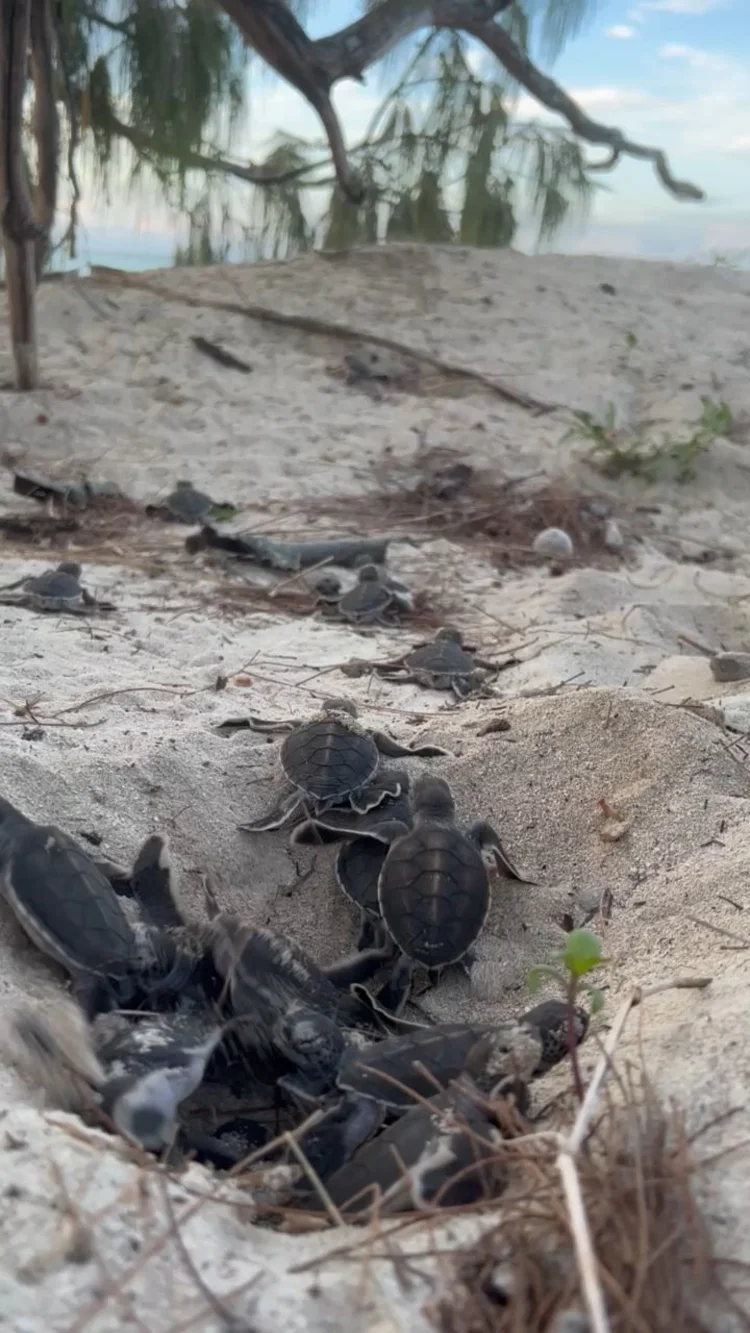
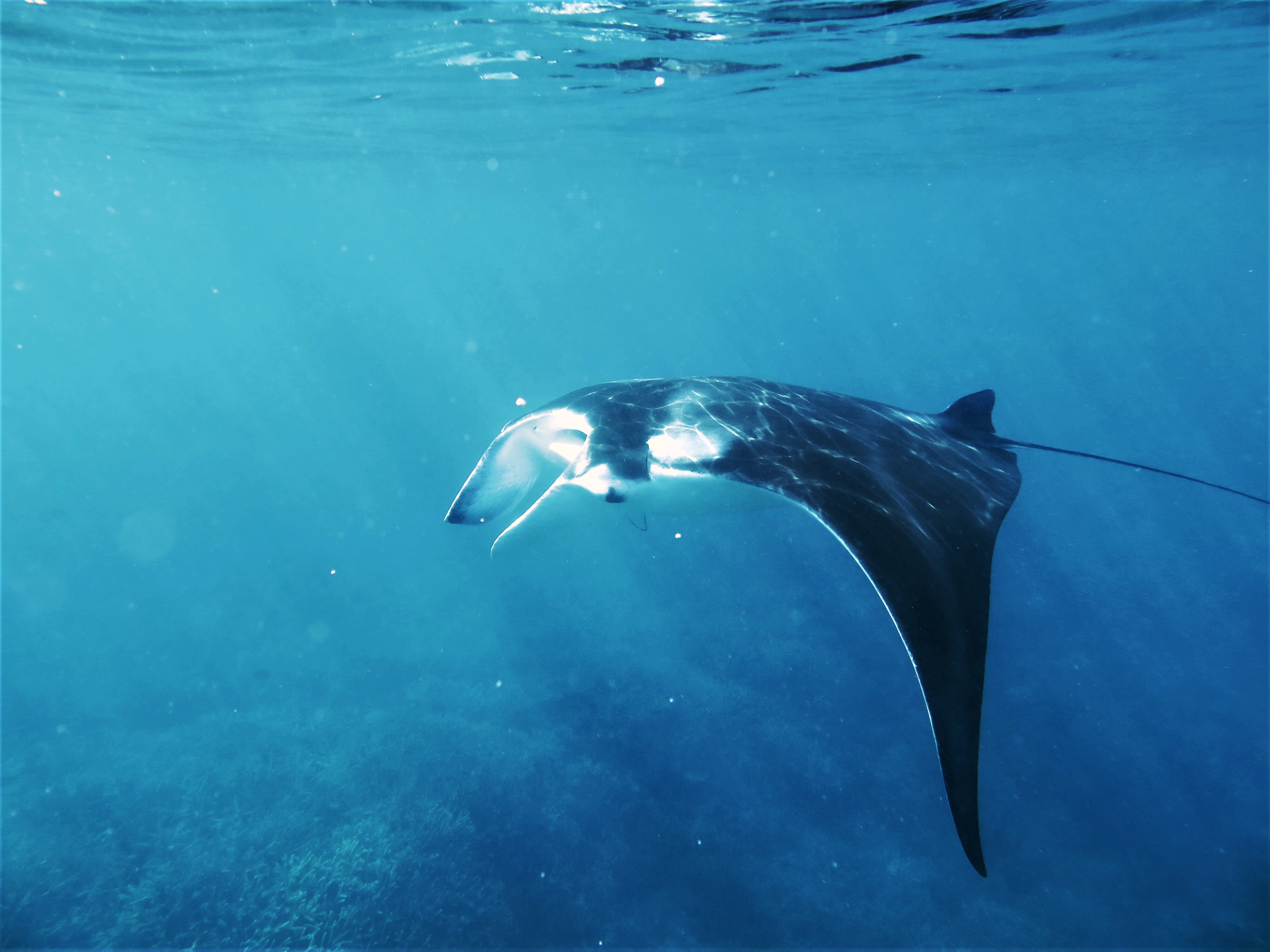
Attenborough, Nat Geo, and love…
Professor Bernard Degnan and Professor Sandie Degnan
Professors, School of Biological Sciences
“We have been going to Heron Island since the early-mid 1980s, first as students, then as teachers and researcher leaders. It became a second home for us and our children. Their time on Heron has shaped who they are as young adults and their curiosity for the natural world. It’s no coincidence that they a part of the next generation of scientists.
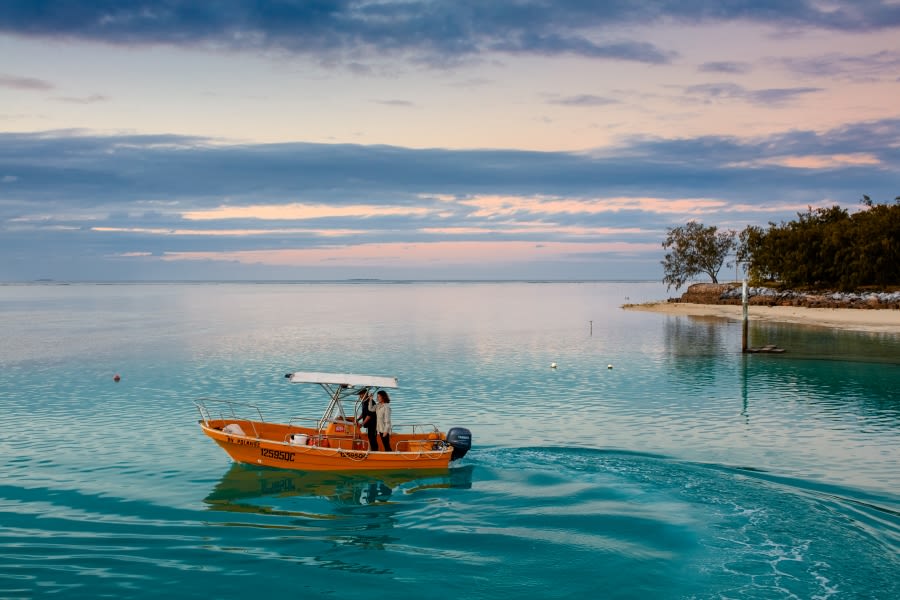
Professor Sandie Degnan and Professor Bernard Degnan on Heron Island. Image: Bernard Degnan
Professor Sandie Degnan and Professor Bernard Degnan on Heron Island.
While we each have had many amazing biological encounters on the reef and island, it has been seeing the effect of the extraordinary place on other people that really stands out.
We actually met each other on Heron Island in 1987 when we each were asked to guide the National Geographic Society Board of Trustees on their visit to the island. The Board was comprised of astonishing explorers and scientists who had accomplished the most incredible things, such as Michael Collins, the Apollo 11 astronaut! Of course, we wanted nothing more than to hear their stories of living with gorillas and climbing Mount Everest and travelling into space, but they in turn were so in awe of Heron Island and its reef that every moment was spent showing them its treasures.
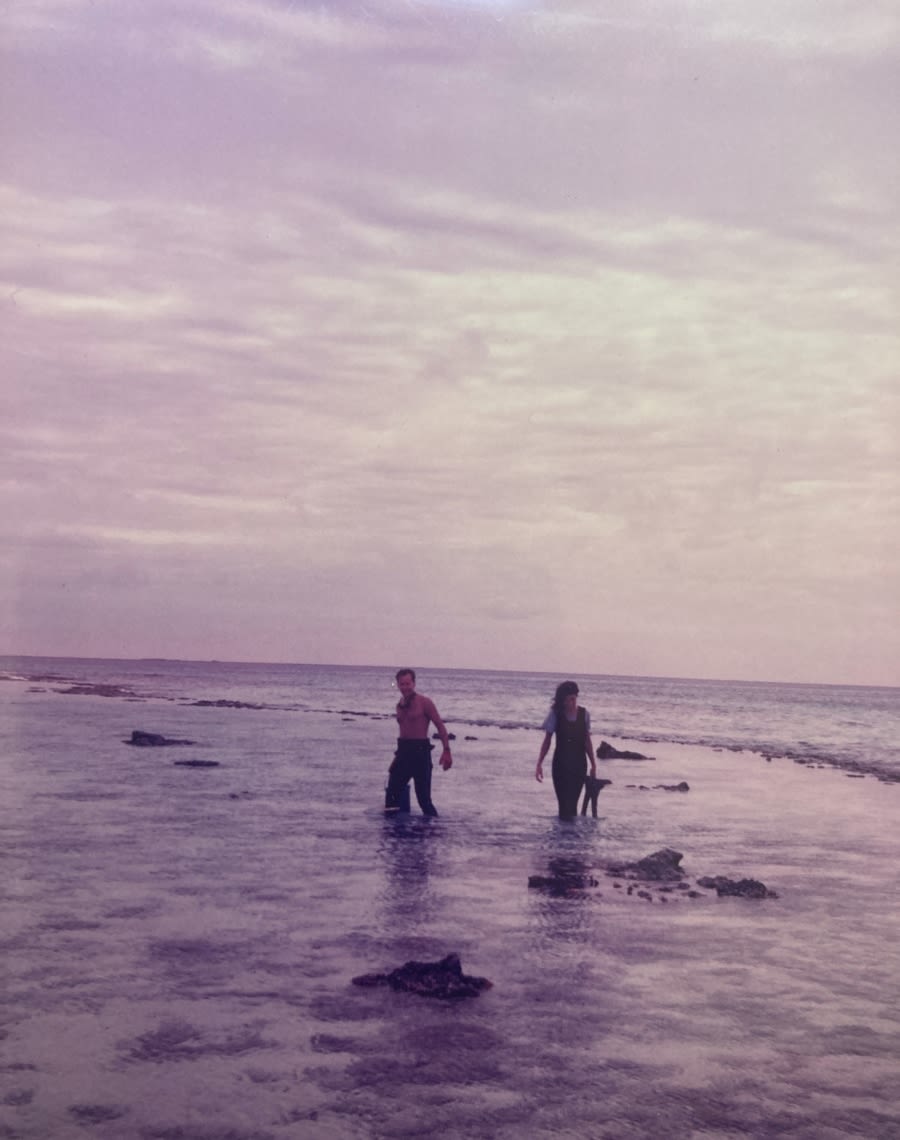
Professor Bernard Degnan and Professor Sandie Degnan on their first date on Heron Island in 1987. Image: Bernard Degnan
Professor Bernard Degnan and Professor Sandie Degnan on their first date on Heron Island in 1987. Image: Bernard Degnan
Against the backdrop of this amazing group of people, in this extraordinary marine environment, we fell in love and were married 13 months later! Sandie’s PhD studies with Professor Jiro Kikkawa on Heron Island silvereyes even ended up being funded by National Geographic.
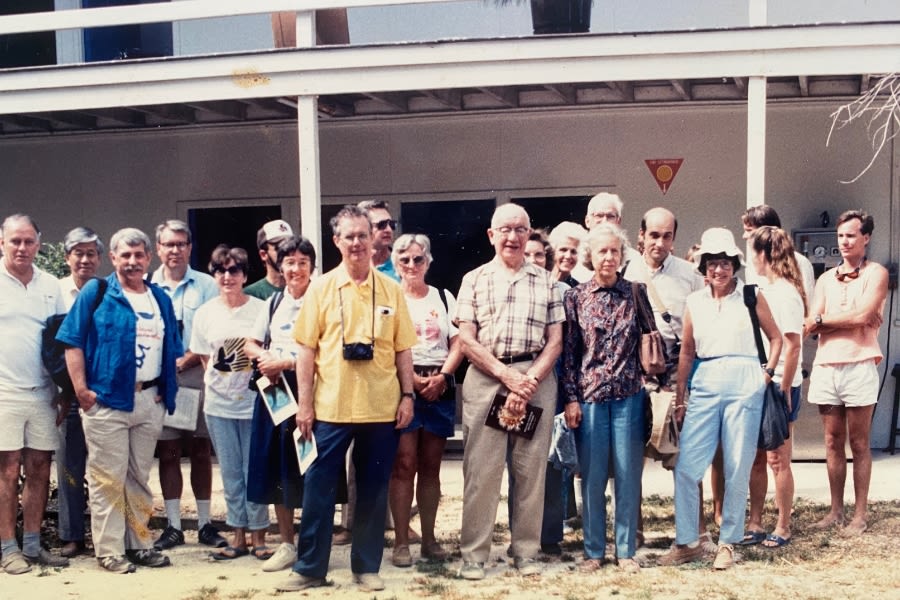
National Geographic members with the UQ Vice-Chancellor and Professor Jiro Kikkawa in 1987. Image: Bernard Degnan
National Geographic members with the UQ Vice-Chancellor and Professor Jiro Kikkawa in 1987. Image credit: Bernard Degnan
But that’s not where our brush with renowned explorers ends, because in 2009 we worked with Sir David Attenborough and his team while they filmed his Emmy award winning series “First Life.” Though our time on the island with Sir David was just a few days, we were involved in script-development, and our microscopy films even made it into the series!”
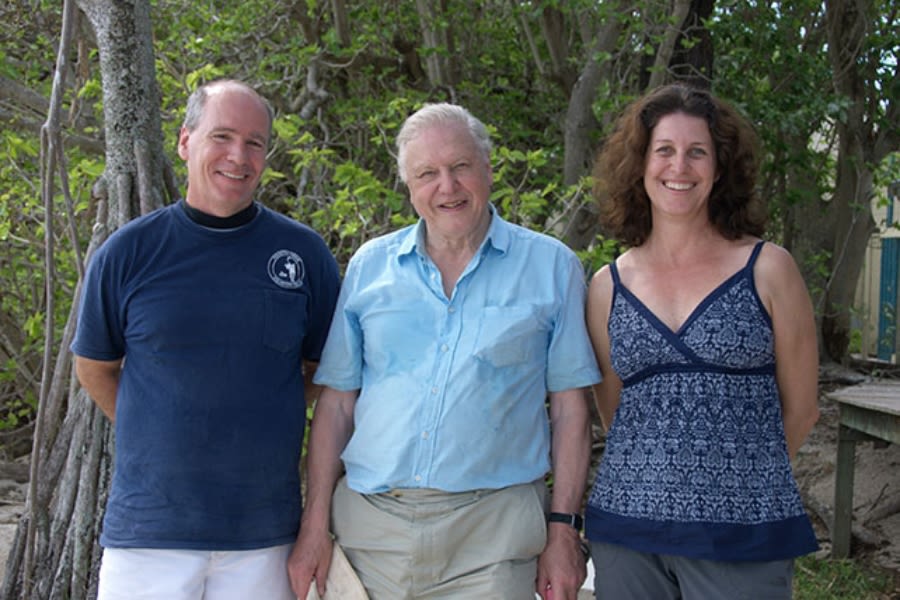
Professor Bernard Degnan, David Attenborough, Professor Sandie Degnan, during filming on Heron Island in 2009. Image: Bernard Degnan
Professor Bernard Degnan, David Attenborough, Professor Sandie Degnan, during filming on Heron Island in 2009. Image: Bernard Degnan
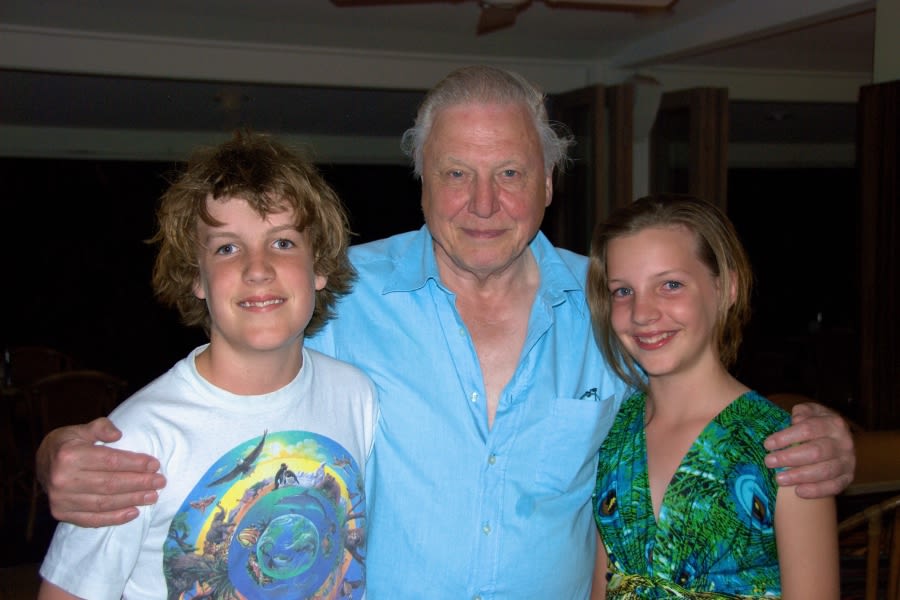
Bernard and Sandie's children, meeting David Attenborough. Image: Bernard Degnan
Bernard and Sandie's children, meeting David Attenborough. Image: Bernard Degnan
Professor Sandie Degnan and Professor Bernard Degnan were recently awarded an ARC Discovery Grant for their project on the origin and evolution of symbioses between animals and bacteria. By understanding how animals and their microbes respond to changing environmental situations, we can develop new approaches to promoting healthy environments. This knowledge can translate into emerging technologies that mitigate threats to environments like the Great Barrier Reef
The Australian Research Council announced $25 million funding for 51 University of Queensland research teams to support a diverse range of fundamental research projects. UQ was awarded the second highest number of grants and total funding from the national scheme in the 2023 round.
A life-long love of the island…
Chris Shaw
UQ alum and Deputy Director General of Hydrogen at the Department of Energy and Public Works
“After yearly childhood camping holidays to the Capricorn Bunker Group of islands I was exposed to amazing experiences the Great Barrier Reef from a young age. The wonderment and strong connection from these trips stayed with me and inspired me to study a Bachelor of Science, majoring in marine biology and ecology at The University of Queensland.
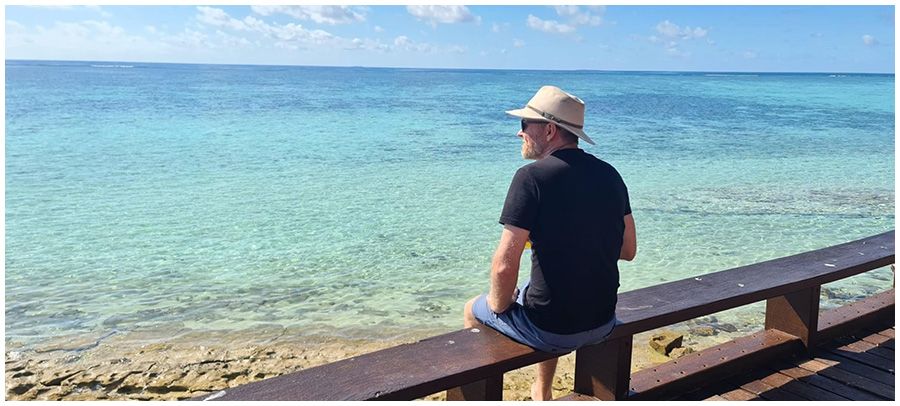
Chris Shaw on Heron Island. Image: Kimberley Shaw
Chris Shaw on Heron Island. Image: Kimberley Shaw
I had numerous trips to Heron in my undergraduate years and absolutely loved them. The clear water, bird life, turtles laying and pristine reef with stacks of fish hooked me.
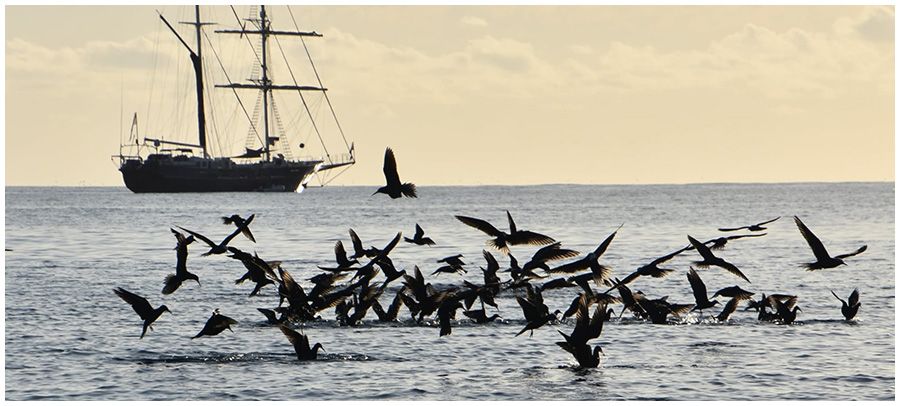
Birds off the coast of Heron Island. Image: Chris Shaw
Birds off the coast of Heron Island. Image: Chris Shaw
I moved into honours and postgraduate research in areas that let me keep coming to Heron, and even worked at the Research Station for about 6 months in boating and diving and in the labs.
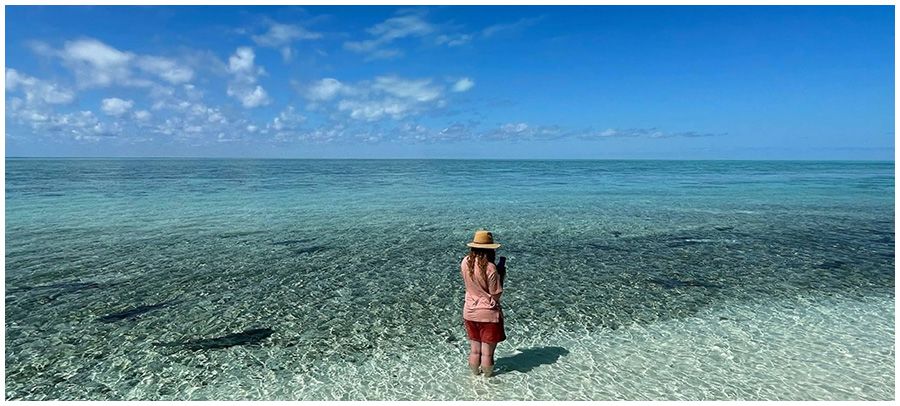
Kimberley Shaw on Heron Island. Image: Chris Shaw
Kimberley Shaw on Heron Island. Image: Chris Shaw
These days I am leading the Queensland Government’s efforts to grow a renewable hydrogen industry to help us and our trading partners decarbonise. I’m fortunate to be able to take my family to Heron and surrounding islands regularly, and it’s a fantastic way to stay grounded and share the joy with our kids.”
– Chris
Background image: Sharks around Heron Island. Image: Chris Shaw
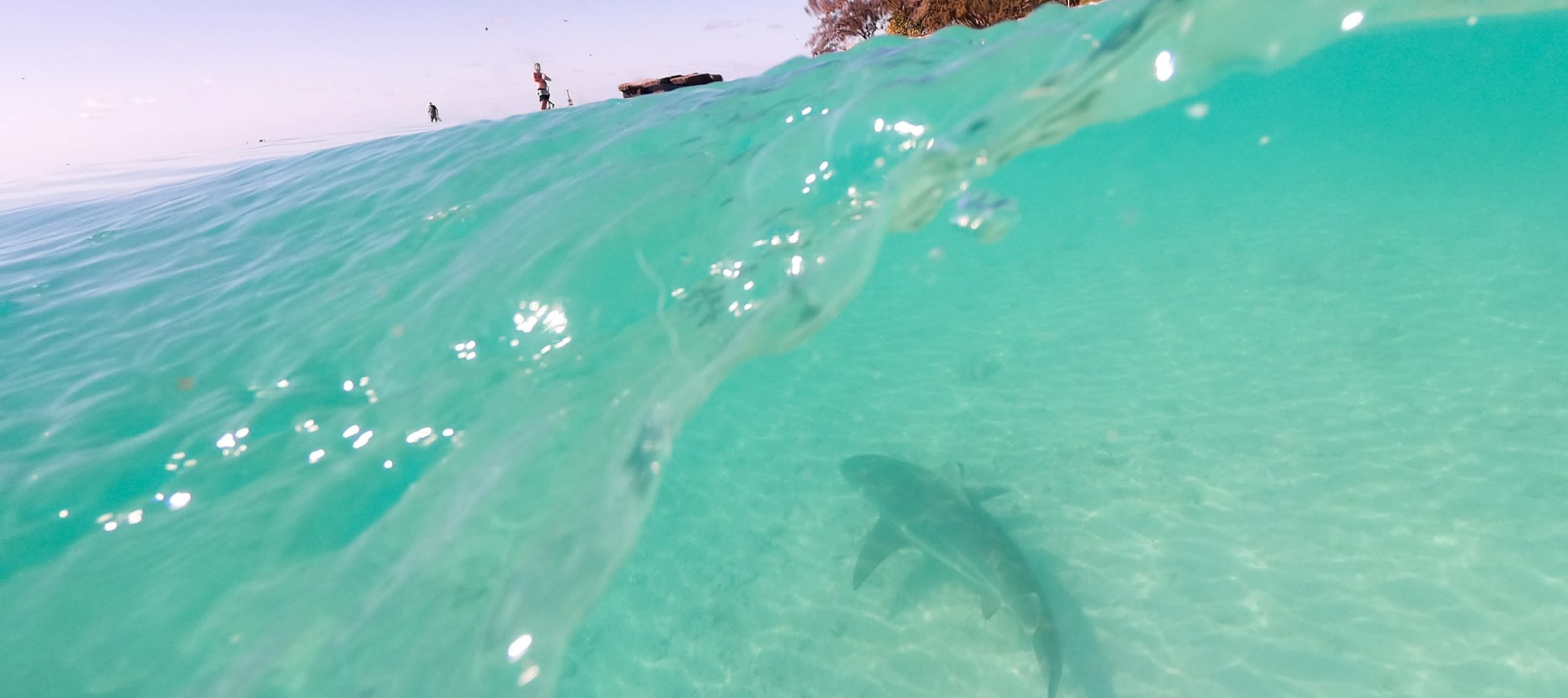
Bringing coral back from the brink
The Reef Restoration and Adaptation Program, which includes researchers from The University of Queensland and QUT, is trialling methods to stabilise coral rubble so that it can provide a solid platform for natural coral recovery.
The first task of marine biologist Dr Tania Kenyon and the team is to understand where and when rubble creates a problem for new coral growth, with their research occurring at UQ’s Heron Island Research Station on the Great Barrier Reef.
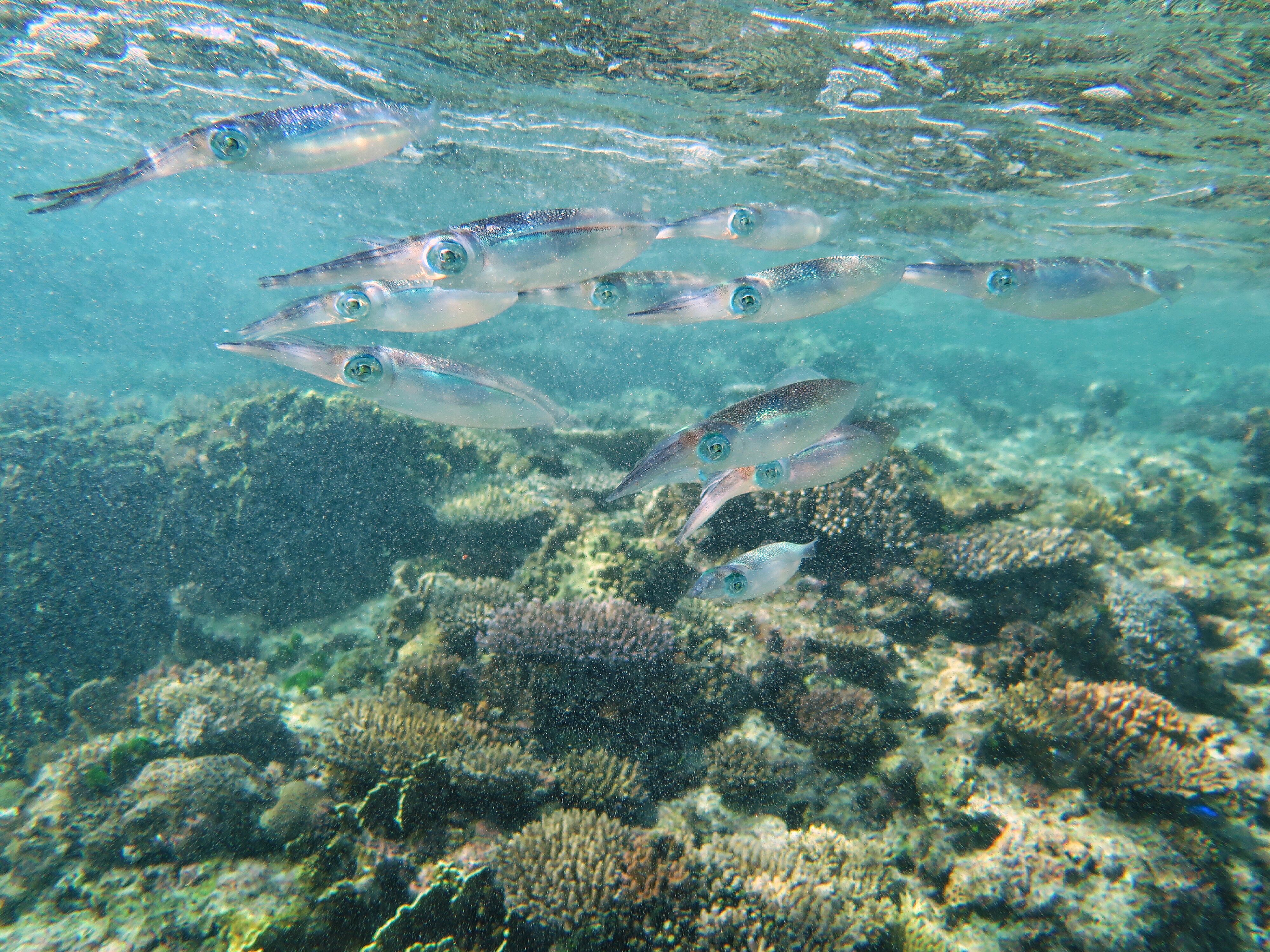
Celebrating regional Queensland
See what the team got up to on our latest Regional Roadshow to Gladstone and Heron Island.
Find out more about UQ’s Regional Roadshows and how the University is breaking down the barriers to a higher education for students across regional and remote Queensland through The Queensland Commitment.
